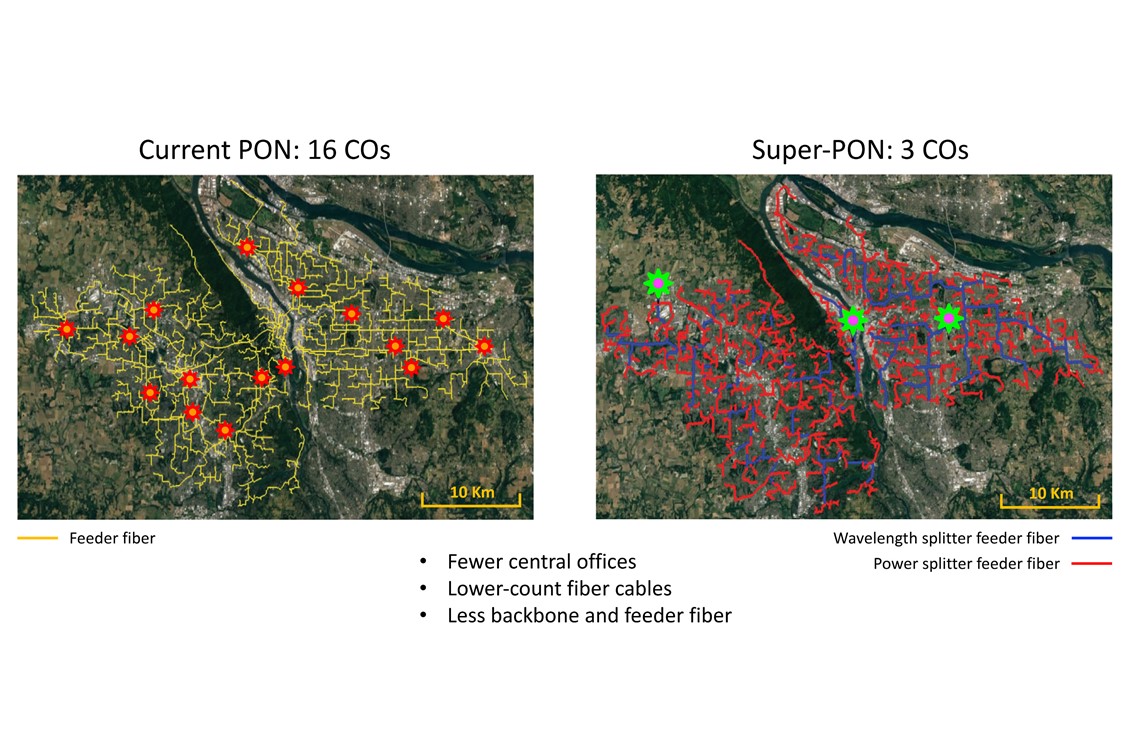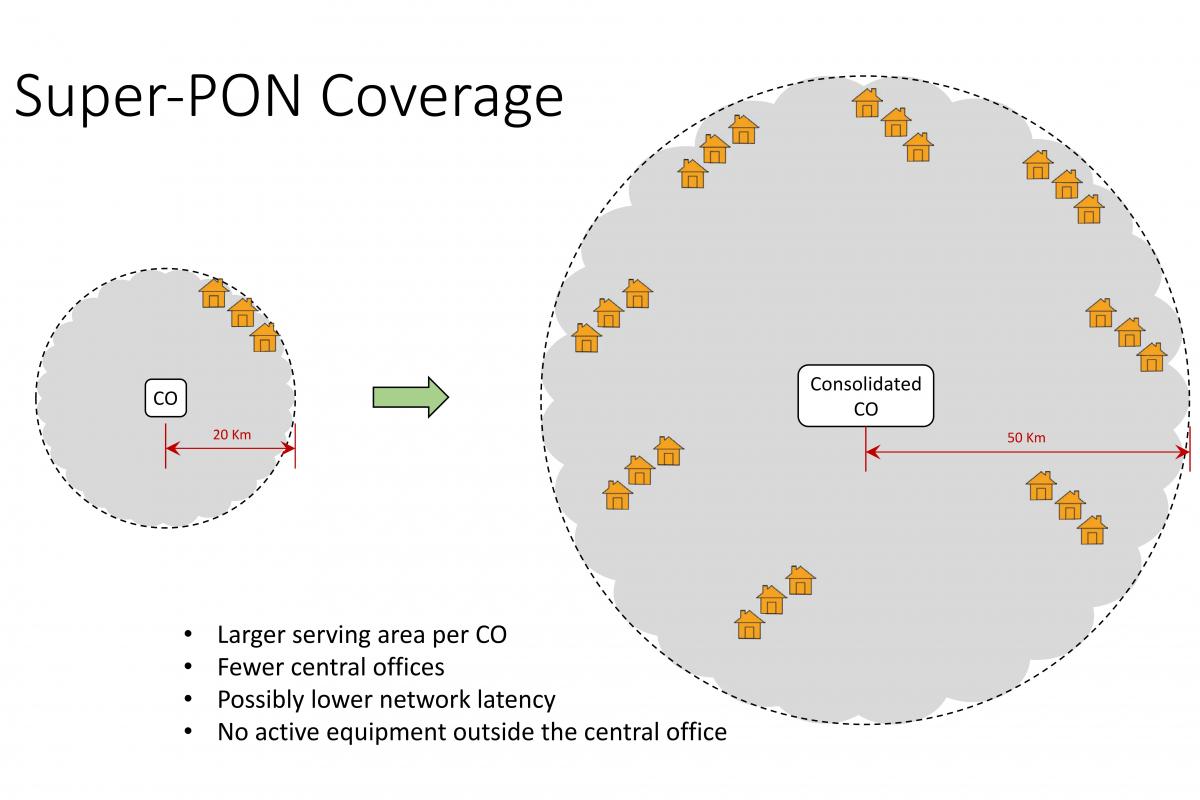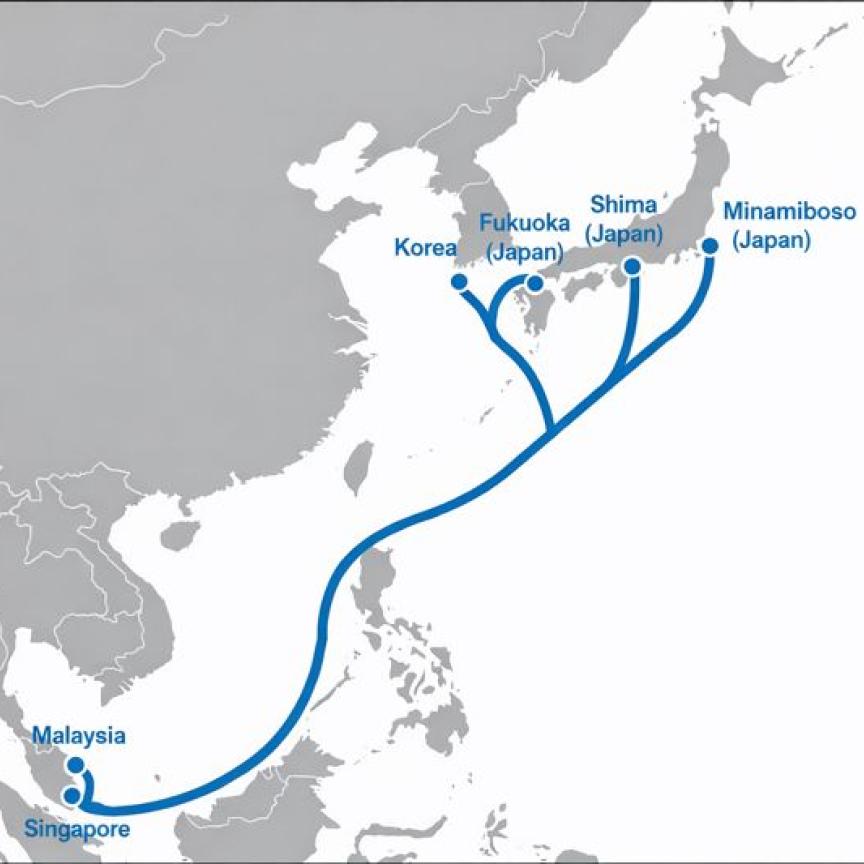Work has started to hone an idea from Google Fiber to increase the reach and number of customers served per fibre of FTTH services. Andy Extance explains
International technology professional body IEEE is working to help fibre-optic communication firms reduce cost and complexity in optical distribution networks – and has gained early industry support. The IEEE 802.3 working group, which develops standards for Ethernet networks, is doing this by building on the ‘Super-PON’ concept developed at Google Fiber.
It envisions a passive optical network (PON) fibre-to-the-home (FTTH) architecture supporting longer distances between the central office and the customer, increasing from 20km today to 50km in the future. SuperPON architecture would support up to 1,024 customers per fibre exiting a central office, compared to just 64 with today’s architectures. This enables a significant reduction of the number of central offices required to support PON services in access networks that provide connectivity to end-users in a certain area.

‘Super-PON is a physical layer technology intended to make the building of optical distribution networks simpler and cheaper,’ said Cedric Lam, engineering director at Google Fiber in Mountain View, California. Building the optical infrastructure is the highest cost component of establishing an access network, Lam explained, and while Super-PON may allow incumbent operators to consolidate their existing active plant footprint to one with fewer central offices, it is especially valuable in new deployments.
Simplifying the process
‘Being a new operator, Google Fiber has to build infrastructure in every market where we decide to operate, which is an incredibly time-consuming and up-front cost intensive proposition,’ Lam explained. ‘A technology that makes this building process simpler and less expensive is of great interest to all new entrants.’ That’s potentially significant, because in 2016 Google Fiber had paused deployments in its ‘potential Fiber cities’. Craig Barrett, outgoing CEO of the access business of Alphabet, Google’s parent company, promised to ‘resume our partnership discussions once we’ve advanced our technologies and solutions’.
‘Building the optical infrastructure is the highest cost component of establishing an access network,’ stressed IEEE P802.3cs chairman Claudio DeSanti, who also works for Google Fiber. He outlined specific cases where operators would like to increase the reach and number of customers a PON can serve. These include operators in countries currently building new infrastructure, perhaps through government sponsored/funded projects aimed at developing large-scale broadband connectivity. Such countries include India, Brazil, Indonesia, Thailand, Vietnam, South Africa, Morocco, Kenya and the Philippines. Alternatively, DeSanti believes it could suit operators keen to provide broadband in suburban, rural, or newly developed areas.
DeSanti has been exploring the potential of Super-PON architecture within the IEEE. ‘The first step to create a standard in IEEE 802.3 is the creation of a study group, intended to investigate a specific technology and scope a problem to be solved,’ DeSanti reasoned. A call for interest on Ethernet access PMDs (Physical Medium Dependent sublayers) for Central Office Consolidation went out in July, at the start of the IEEE 802 Plenary meeting in San Diego, California. Of 62 attendees at the consensus-building session the next day, 19 people affiliated with 15 different companies expressed interest in participating. IEEE 802.3 approved the creation of the ‘IEEE 802.3 Physical Layers for increased-reach Ethernet optical subscriber access (Super-PON) Study Group’ on the meeting’s final afternoon. ‘The Study Group can then evolve into a task force, where the actual standard, i.e. the solution to the problem, is developed,’ said DeSanti.
Economic synergy
The Super-PON Study Group approved the formation of a task force in November in Bangkok, Thailand. ‘29 individuals affiliated with 23 different companies participated,’ explained DeSanti. ‘These affiliated companies include system vendors, silicon component vendors, optical component and cable vendors, and network operators. The request to form the IEEE P802.3cs Task Force was approved by the IEEE 802.3 plenary with a 100 per cent consensus. This demonstrates a significant buy-in by individuals with affiliations across the industry. Participation in study group meetings has been above expectations.’
The group aims to take advantage of wavelength division multiplexing (WDM), which is already commonly used in backbone and metro networks. However, WDM has historically been less common in access networks because it is more expensive than alternative time division multiplexing (TDM) HLundgaard, used via Wikimedia CC BY-SA 3.0 licences approaches. But using WDM enables one fibre to carry multiple PON instances ‘just by mapping each instance to a different wavelength and in this way increase the number of customers supported,’ Lam explained. ‘As an example, by using 16 different wavelengths, it is possible to transport 16 PON instances, each supporting 64 customers, for a total of 1,024 customers per fibre exiting the central office.’ This 1:64 split ratio means the cost of the central office is spread across more customers, lowering the overhead for each of them.
Super-PON is also incorporating downstream and upstream amplification, which makes its extended reach possible by increasing optical signal strength. This helps overcome the progressive losses that limit reach on weaker signals. Additionally, Super-PON seeks to achieve bit error rates (BERs) better than or equal to 10-12 at the Media Access Control/Physical Layer Signalling (MAC/PLS) interface, where the data link meets transmission. Adequate energy per bit is required to overcome the system noise to achieve this.
‘However, amplification is expensive,’ Lam conceded. Perhaps surprisingly, combining two relatively expensive technologies can actually lower costs, he asserted. ‘Super-PON mitigates the cost of optical amplification, by applying it to all multiplexed wavelengths at once. In this way, the cost is distributed over a large number of customers and becomes bearable. In addition, amplification is performed inside the central office, to keep the optical distribution network fully passive.’
At the same time, the extended range enabled by amplification reduces the number of central offices and equipment, including optical line terminals (OLTs), within. That’s desirable for operators, as the active OLT equipment requires power, cooling, administration and maintenance. ‘Reducing the number of OLT locations reduces the number of powered sites that may require manned operations,’ underlined DeSanti. ‘Significant operational and construction savings can be achieved when fewer of these structures are needed.’
‘In addition, OLTs are active equipment that can be subject to faults of various kinds,’ Lam observed. ‘By consolidating them in fewer and better controlled places, it is possible to improve their reliability, potentially making the overall network more reliable.’ And because Super-PON reduces how many fibres are needed to support the same number of customers, the network operators can deploy smaller cables, which are easier to deploy and repair. Operators can use micro-trenching approaches, which only require thin cuts to be made in surface paving, to install them more simply and economically than using traditional trenching methods.
2020 vision
In Super-PON individual wavelengths are spread between subscriber optical network terminals (ONTs) by passive wavelength splitters and optical power splitters. Unlike the Next-Generation Passive Optical Network 2 (NG-PON2) standard, tunability is not mandatory in ONT optical transceivers, although this would reduce inventory complexity.
The wavelength filtering inherent in the Super-PON network would mean that ONT transceivers may only need tunable lasers, making them cheaper and simpler than NGPON2 transceivers that also need tunable receivers. Overall, Super-PON is intended to complement existing PON technology, DeSanti explained. ‘Operators that already built their infrastructure for the current PON technology may continue to leverage it,’ he said. ‘When needed, new optical infrastructure could be more advantageously built with Super-PON.’

In DeSanti’s presentation to outline SuperPON, he indicates the possibility of using a cyclic arrayed waveguide grating (CAWG) as passive wavelength router, to separate the 16 different wavelengths. Optical splitters then replicate each wavelength among up to 64 ONTs. The AWG can be up to 40km from the central office, and the ONUs up to 20km from the AWG, as long as the sum of the two distances is less than 50km.
Google Fiber has already deployed one practical test of Super-PON, using general Gigabit PON (GPON) transmission specifications of 2.5Gb/s downstream and 1.25Gb/s upstream. Now, the IEEE effort is looking at 10Gb/s transmission. Google Fiber is also discussing whether the technology could serve as an extension of NG-PON2 with the International Telegraph Union (ITU) Telecommunication Standardization Sector (ITU-T). DeSanti’s outline presentation foresees a key opportunity for Super-PON beyond 2020, when 10Gb/s PON will become commercially significant.
An alternative view
Key networking and communications equipment supplier ADTRAN, based in Huntsville, Alabama, is involved in advancing the technology. ‘Super-PON is an example of how ADTRAN is enabling alternative network providers to innovate to meet growing demand for multi-gigabit services,’ revealed Ryan McCowan, their director of portfolio management for fibre access. He stressed that reaching farther and unlocking more capacity on each fibre are valuable to internet service providers without existing real estate.
‘This kind of innovation validates what we all know – demand for multi-gigabit technologies like 10G PON is increasing around the world as more people, places and things need higher capacity, faster symmetrical broadband. As 10G PON optics’ cost continues to become more favourable compared to legacy technologies, both incumbent service providers and alternative network providers are deploying 10G technologies like XGSPON and NG-PON2. Super-PON represents continuing innovation and evolution of these technologies,’ he said.
And activities are now underway to drive that evolution. The IEEE P802.3cs project to develop the protocol was approved by the IEEE Standards Association’s standards board in December. It will be called IEEE P802.3cs Standard for Ethernet Amendment: Physical Layers and management parameters for increased-reach point-to-multipoint Ethernet optical subscriber access (Super-PON).
‘As a result of the approval, the first IEEE P802.3cs Task Force occurred on 15 January,’ said DeSanti. ‘At that meeting, the project started the selection of baseline proposals to address the project objectives to start development of the draft.
‘Once there is a complete draft, it will proceed through two cycles of balloting, which, if conducted correctly and successful, will result in approval of an IEEE standard.’
Andy Extance is a freelance science writer based in Exeter, UK

